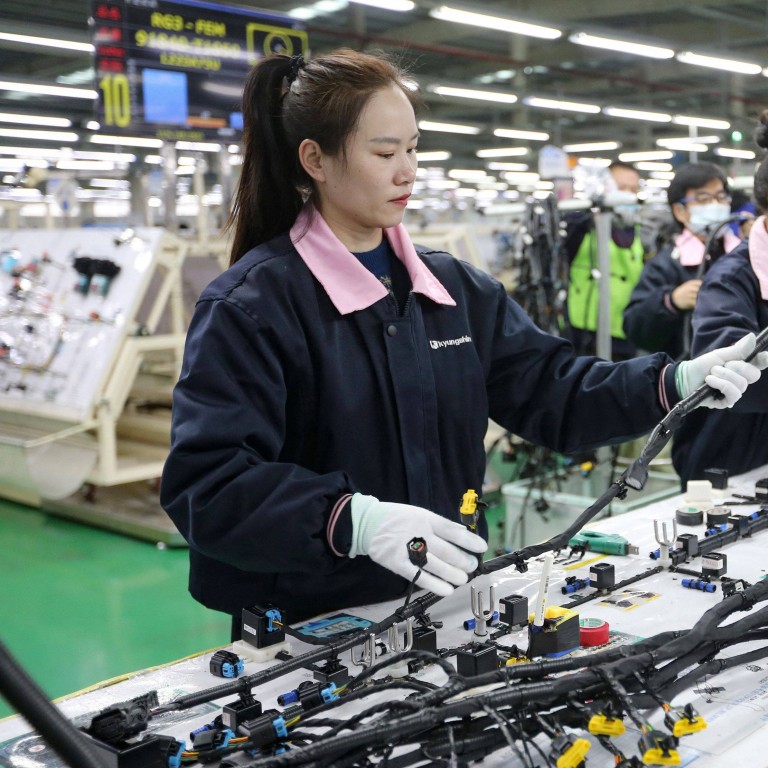
China’s economic recovery continued in March, driven by better-than-expected surge in service sector
- China’s non-manufacturing purchasing managers’ index (PMI) – a gauge of sentiment in the service and construction sectors – rose to 56.3 in March from 51.4 in February
- The official manufacturing PMI – a survey of sentiment among factory owners in the world’s second-largest economy – rose to 51.9 in March from 50.6 in February
China’s economic recovery continued in March, powered by a better-than-expected surge in the service sector, data released on Wednesday showed.
The official manufacturing PMI – a survey of sentiment among factory owners in the world’s second-largest economy – rose to a three-month high of 51.9 in March from 50.6 in February. March’s reading was above the median prediction of 51.2 in a Bloomberg poll of analysts.
A reading above 50 indicates growth in sector activity, while a reading below the mark represents contraction. The higher the reading above 50, the faster the pace of expansion.
“Some surveyed companies reported that due to repeated overseas outbreaks and clogged international economy and trade, the recent supply of some imported raw materials has been insufficient, prices have risen significantly, and delivery cycles have been extended.
“As the results of [coronavirus] pandemic controls being consolidated, consumer demand continues to be released, and the service industry accelerated its recovery.”
The composite PMI rose, hinting at a return to the strong pace of month-on-month expansion seen during the second half of last year. We doubt that such growth rates can be sustained for long, however
The official composite PMI – a combination of the manufacturing and non-manufacturing indices – rose to 55.3 in March from 51.6 in February.
“The composite PMI rose, hinting at a return to the strong pace of month-on-month expansion seen during the second half of last year. We doubt that such growth rates can be sustained for long, however,” said Julian Evans-Pritchard, senior China economist at Capital Economics.
“As service sector activity returns to trend, the room for catch-up growth will diminish. And the current strength of exports is likely to unwind over the coming quarters as vaccinations allow a return to more normal global consumption patterns. Finally, less supportive fiscal policy and tighter regulation of real estate developer financing look set to weigh on construction.”
Within the official manufacturing PMI, the sub-index for new exports orders rose to 51.2 in March from 48.8, with the new order sub-index up to 53.6 from 51.5. The employment sub-index within the official manufacturing PMI also returned to expansion after rising to 50.1 from 48.1.
China’s services sector: what is it and why is it important to the economy?
The employment sub-index for the non-manufacturing PMI, though, remained in contraction at 49.7, up by 1.3 from a month earlier.
“The business activity indices of railway transportation, air transportation, telecommunications, broadcasting and television satellite transmission services, internet software and information technology services, and financial services sector were all above 60, the total business volume has grown rapidly,” added Zhao.
“The business activity index of accommodation, leasing, business services, and resident services, which were greatly affected by the local outbreaks at the beginning of the year, rebounded to the expansion territory and the operating conditions improved significantly.”

.JPG?itok=J8tgfPmW&v=1659948715)
